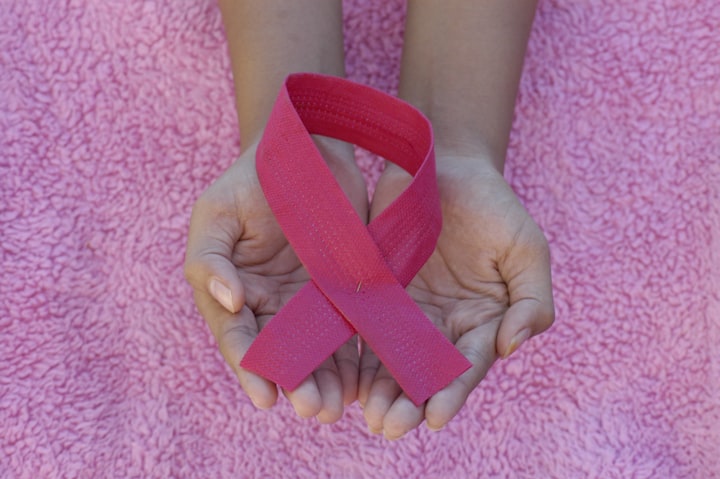CANCER
Understanding The Basics of Cancer

Cancer is a broader term that refers to a group of diseases characterized by the uncontrolled growth and spread of abnormal cells. These abnormal cells can invade and destroy normal tissues, causing serious health problems.

Cancer may occur in any part of the body and can affect people of all ages. It is caused by mutations in the DNA of cells that control cell growth and division. These mutations can be caused by a variety of factors like genetic predisposition, exposure to carcinogens such as tobacco smoke or UV radiation, viral infections, and environmental toxins.
There are different types of cancer, each with its own unique set of symptoms and treatment options. Some of the common types of cancer include:
1. Breast Cancer - is a type of cancer that forms in the breast tissue, typically in the ducts that carry milk to the nipple. Breast cancer can affect both men and women, although it is common in women. Symptoms of breast cancer include a lump in the breast, changes in the size or shape of the breast, nipple discharge, and skin changes.
2. Lung Cancer - is a type of cancer that forms in the lungs, usually in the cells that line the air passages. Smoking is the leading cause of lung cancer, but exposure to other toxins such as radon and asbestos can also increase the risk. Symptoms of lung cancer include a persistent cough, chest pain, shortness of breath, and coughing up blood.
3. Prostate Cancer - is a type of cancer that forms in the prostate gland, which is located in the male reproductive system. It is the most common cancer among men. Symptoms of prostate cancer may include difficulty urinating, a weak or interrupted urine flow, blood in the urine, and pain or discomfort in the pelvic area.
4. Colorectal Cancer - is a type of cancer that forms in the colon or rectum, which are part of the large intestine. It is one of the most common types of cancer worldwide. Symptoms of colorectal cancer may include changes in bowel habits, blood in the stool, abdominal pain or discomfort, and unintended weight loss.
5. Skin Cancer - is a type of cancer that forms in the skin, usually in the cells that produce pigment. There are three main types of skin cancer: basal cell carcinoma, squamous cell carcinoma, and melanoma. Symptoms of skin cancer may include changes in the appearance of moles or other skin lesions, skin ulcers that do not heal, and skin that is reddish or irritated.
6. Leukemia - is a type of cancer that forms in the blood and bone marrow, where blood cells are produced. Leukemia can affect both children and adults. Symptoms of leukemia may include fatigue, fever, easy bleeding or bruising, and recurrent infections.

7. Lymphoma - is a type of cancer that forms in the lymphatic system, which is part of the immune system. There are two main types of lymphoma: Hodgkin's lymphoma and non-Hodgkin's lymphoma. Symptoms of lymphoma may include swollen lymph nodes, fever, night sweats, and unexplained weight loss.
8. Brain Cancer - is a type of cancer that forms in the brain or spinal cord. Brain tumors can be benign (non-cancerous) or malignant (cancerous). Symptoms of brain cancer may include headaches, seizures, difficulty speaking or walking, and changes in personality or mood.
9. Ovarian Cancer - is a type of cancer that forms in the ovaries, which are part of the female reproductive system. Ovarian cancer is often called the "silent killer" because it often goes undetected until it has spread to other parts of the body. Symptoms of ovarian cancer may include abdominal bloating, pelvic pain or pressure, and changes in bowel or bladder habits.
10. Pancreatic cancer - is a type of cancer that forms in the pancreas, a gland located behind the stomach. It is a highly aggressive cancer that often spreads quickly to other organs and is difficult to treat. Symptoms may include abdominal pain, weight loss, and jaundice.
Diagnosis of Cancer
There are a variety of tests used to diagnose cancer, including imaging tests such as X-rays, CT scans, MRI scans, and PET scans, as well as biopsy tests which involve removing a small piece of tissue for examination under a microscope. Blood tests and genetic tests may also be used to help diagnose and stage cancer.

Once cancer is diagnosed, treatment options depend on the type and stage of cancer. Treatment may include surgery, radiation therapy, chemotherapy, targeted therapy, immunotherapy, hormone therapy, or a combination of these treatments.

Surgery involves the removal of the tumor and surrounding tissue. Radiation therapy uses high-energy rays to kill cancer cells. Chemotherapy uses drugs to kill cancer cells. Targeted therapy uses drugs that target specific proteins or other molecules involved in cancer growth. Immunotherapy helps the body's immune system fight cancer cells. Hormone therapy targets hormones that may be fueling certain types of cancer.
In addition to the treatments, there are other supportive therapies like pain management, nutrition support, and psychological support that can help improve quality of life for cancer patients.
The choice of treatment depends on various factors, including the stage of cancer, the location of the tumor, the overall health of the patient, and the patient's personal preferences. Treatment plans are often developed by a team of healthcare professionals, including oncologists, surgeons, radiation therapists, and other specialists.
While cancer can be a serious and life-threatening disease, advances in medical research and treatment have led to improved outcomes for many patients. Early detection and treatment are key to successful cancer treatment, so it is important to be aware of your body and report any unusual symptoms or changes to your healthcare provider. Lifestyle factors such as maintaining a healthy diet, staying physically active, and avoiding exposure to known carcinogens can help reduce the risk of developing cancer.
Yours Truly,
Al Rauf Okal
About the Creator
Al Rauf Okal
Do you love your body? I am an enthusiast of healthy living. I’ll be sharing on ways of living healthy. We got to enjoy life and make the best out of it. Make a point to subscribe, support and give reviews.






Comments
There are no comments for this story
Be the first to respond and start the conversation.